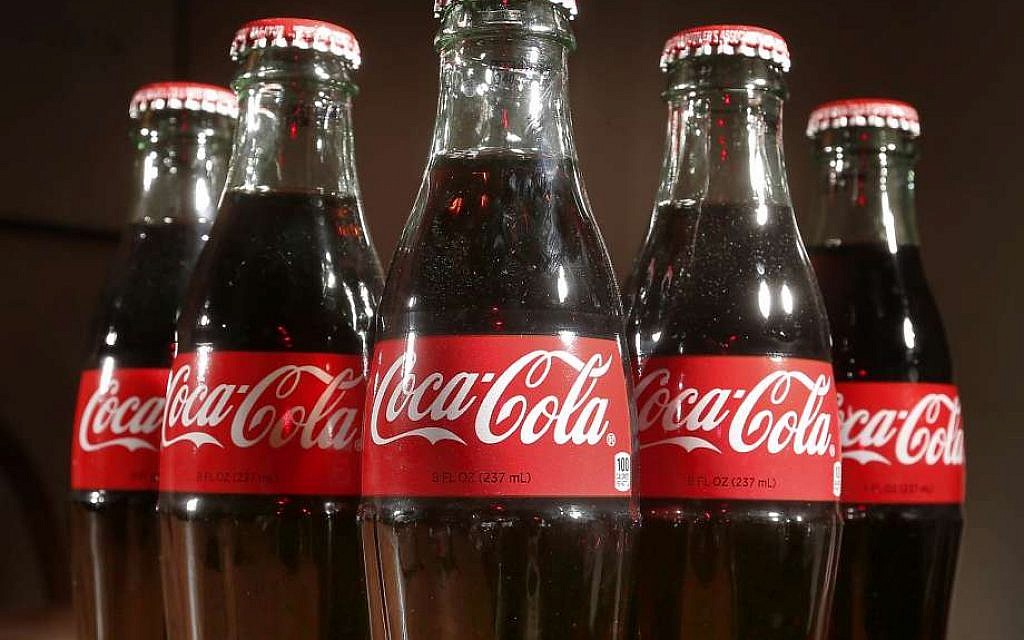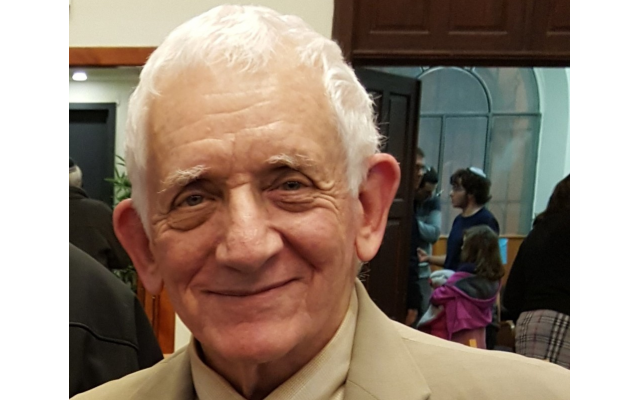Emory: The Coca Cola School
Rabbi David Geffen reflects on Emory University's sweet history of Jewish enrollment.
Rabbi David Geffen is a native Atlantan and Conservative rabbi who lives in Jerusalem.
When I matriculated to Emory University in the fall of 1955, one of the first bits of advice I was given was related to Atlanta’s famous beverage.
“David, you can go to any soft drink machine on campus, and it will be filled with Coca-Cola bottles. If you put in a nickel, a cold Coke drops down for your enjoyment.”
The next day I went to a soft drink machine in the history building. It was filled with Coca-Cola. I put in my nickel and a Coke popped out. I am not sure how long it lasted after I enrolled, but I learned that Coca-Cola treat had existed for Emory students for quite a number of years.
Professor Michael Elliott, dean of the College of Arts and Sciences at Emory, traveled to Israel a few weeks ago to meet with alumni and to sign agreements for Emory to have joint educational projects and courses that Emory students can take. He met Emory alumni in various cities. I attended the alumni reunion with the dean in Jerusalem. Eight of us were present. The gathering was held in the David Citadel Hotel, where we reminisced about our days at Emory. I was the oldest alumnus present, so I recalled aspects at Emory which no longer exist. Those of us present hope that we can have some more Emory gatherings.
2019 is a centennial year for the admission of Orthodox Jewish students to Emory. One or two Jewish students had been enrolled before 1919, but the breakthrough came in late spring that year.

Rabbi Tobias Geffen, my grandfather, was a key figure, so in our family it is one of our legends.
My uncle, Dr. Joel Geffen z’l, and his classmate, Professor Moses Hadas z’l, were sent in 1918, after they graduated Boys High, to New York to study at the original Yeshivat Yitzhak Elchanan on the East Side. They were both smart; they had learned with Rabbi Geffen from age 10. However, at the yeshiva, almost all the other students had studied at the great yeshivot in Eastern Europe. From what I understand, Geffen and Hadas did their best, but it was hard to compete.
On their Pesach break, they indicated to my grandfather that they did not feel that they could continue where they were learning. In 1919, after he learned the attitude of these young men, he took a train to New York and the Jewish Theological Seminary to visit Professor Louis Ginzberg, an outstanding Talmudist, whom he knew from Kovno, Lithuania.
My grandfather wanted these two young men to be rabbis, so he went to the seminary to see how they could enroll. Ginzberg told him that they had to have a college degree to be eligible for enrollment. Rabbi Geffen took the train back to Atlanta since he knew what he had to do. On his return, he arranged an appointment with Chief Methodist Bishop [Warren] Candler, brother of Asa Candler and president of Emory.
Emory had moved to Atlanta from its original home in South Georgia. In 1918 or 1919, after Emory was already in Atlanta, in a building downtown, Asa Candler, president of the Coca-Cola Company, gave Emory a large piece of land in Druid Hills – the Emory campus we all know.
Rabbi Geffen and Bishop Candler met. Emory had Saturday classes so the students could go to church on Sunday and do their homework on Monday. The compromise worked out was that the two had to attend classes on Shabbat and holidays, but they did not have to write or take tests. To get to Emory from Hunter Street, where they lived, they had to walk four miles there and back. When they returned, they ate and then they learned with Rabbi Geffen the rest of Shabbat.
Emory became a wonderful college for Atlanta’s young men. Until 1957, only the daughters of ministers and rabbis could attend. Then Emory became co-ed. Sharon Singer Norry z’l and Lois Frank were among the first Jewish girls who were Emory students.
The Jewish enrollment grew at Emory in the 1920s as the sons of Atlanta immigrants came of age to embrace higher education and to study, in particular, for professions. Doctors, lawyers, some dentists and professors too.
The three schools in Georgia which welcomed Jewish students were Georgia Tech, the University of Georgia and Emory. In the ‘20s Georgia Tech was basically an engineering school. Whereas in the South there was no real prejudice about Jews entering the engineering profession; in the North, getting jobs for Jewish engineering graduates was difficult. My mother, Anna Geffen z’l, had a younger brother, Easy Birshtein, my uncle. He graduated NYU as an outstanding student in the field of engineering, but he could not get a job.
The University of Georgia welcomed Jewish students: men and co-eds. From what I have heard from early graduates in the 20s and 30s, UGA was a fun school, with football, fraternities and sororities. Most Jewish Georgians who wanted to practice law in Georgia attended the University of Georgia Law School. Some went to the Georgia medical school in Augusta.
Emory provided an opportunity for Jews and non-Jews to receive a very good liberal arts education. Most Jewish graduates of Emory in the 20s and part of the early 30s could get into medical school and law school. The dental school came under Emory’s wings in the 30s. Emory also provided wonderful fraternity life. The Jewish fraternities could shine with their scholastic excellence. The extra-curricular activities found Jews in most of them.
There was no public information about Jews at Emory until the Southern Israelite became an Atlanta paper in 1929. Then there were reports of the [Jewish] Educational Alliance activities, the synagogues’ well-rounded programs and educational events, and the programs and projects of the many organizations in the Atlanta Jewish community.
A major page called “College Notes” in the Southern Israelite announced “the largest enrollment of Jewish students in the history of Emory University is announced for the 1931-1932 term. Sixty-nine have registered this year, as compared with the record fifty for 1930-1931.
“’With the increased attendance comes an increased participation of Jewish students in the various school activities,’ according to R. B. Nixon, assistant to the president of Emory.”
Then the names started to pour out. “Emory’s ‘Little Symphony’ orchestra included: Joe Glazer, Simon Wender, Louis Shalloway, Mendal Segal and Isadore Hoffman.” I knew Hoffman well when I was an Emory student from 1955 to 1959 since I was an AEPi [Alpha Epsilon Pi]. He was the chapter’s advisor who bailed us out many times. Later he became the international president.
One of the interesting areas of participation for the Jewish students was football. “Members of the school football teams are Goldwasser, regular guard for the senior team; Slakman, guard for the freshmen; Shalloway and Hoffman, linemen for the sophmores.”
In the spring quarter 1931, AEPi won the fraternity scholastic competition. In the chapter were: Sidney Rose, Charles Hoffman, Ben Millender, Sam Zion, Nathan Gershon and many others.
To me, what made a major difference for the professional development of our fathers and mothers is that our grandparents, in spite of the depression, sent their children to college. The expenses were not always easy to handle, but that was a priority for the generation that came before World War I as immigrants, and those who came after the war in the few years before immigration was closed in 1925. We, their grandchildren in our 80s, are blessed because of their foresight. For me and many Atlanta families, Emory’s interest in our becoming students is a very special facet of the Coca-Cola school.
Rabbi David Geffen is a native Atlantan and Conservative rabbi who lives in Israel.




comments